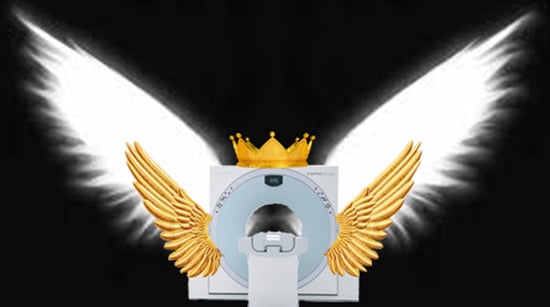The term “commodity” is used to describe a class of goods where demand exists, but its’ supply is without qualitative differentiation across a market. It leads to smaller profit margins and actually diminishes the importance of factors like brand names, and increases the importance of price. So the big question in medical imaging is has it become a commodity?
 It starts by answering these questions:
It starts by answering these questions:
- Can medical imaging differentiate exam quality?
- Can medical imaging effectively differentiate radiologists?
- Can medical imaging contribute to lowering costs?
- Can medical imaging demonstrate positive outcomes for patients?
And perhaps, most importantly, can it show value to the end user, the referring physician?
Here’s what we do know: according to a study about referring physician dissatisfaction with medical imaging, the following was revealed:
- There is a 53.3% dissatisfaction rate with medical imaging scheduling & registration
- There is a 34.2% dissatisfaction rate with turnaround time and quality of reports
- There is a 32.8% dissatisfaction rate with the preauthorization process
- There is a 23.4% dissatisfaction rate with the quality of and access to radiologists
- And finally, there is a 21.4% dissatisfaction rate with imaging technology itself
It’s also important to note that since 1980, the price of imaging has gone down while the demand has increased. Before 1980, medical imaging was a true profit maker. In other words, the supply/sources are relative to the demand. But according to Andrea L. Ames’ article, “Moving from Commodity to Strategic Contributor 1995-2003, the supply/source is now relative to the demand.
Medical imaging is:
- Purchased on price
- With little to no differentiation
- Easy to obtain
- Enjoys market availability
In order to be competitive in a commodity situation, medical imaging manufacturers and distributors have to deliver high value in a very strategic and relevant way.
- They must understand the nature of the market, including the competition
- They need to demonstrate a financial benefit and justify costs.
- They need to deliver quality in a way that can be measured and proven
- They need to partner with customers that want them to be a success
- They need to think and act like a market leader and visionary, in order to distinguish themselves from the pack.
- They need to understand what customers view as valuable.
Physicians grow frustrated and weary when they receive an indeterminate report that requires more imaging. After all, it frustrates their patients and costs more money. Likewise, overzealous reports (false positives) can delay the diagnostic process and cause patient distress. A late report is another “pet peeve” among physicians, but can also be remedied by internal workloads, scheduling and staffing. Receiving the wrong report is also a “no-no”, as it causes stress for all concerned.
As you can see, there are already ways regarding customer service and performance that can differentiate between a clinic, practice or facility that provides medical imaging. Can that alone negate the perception of medical imaging as a commodity? It’s a complicated question, which is why we’ll provide more answers in three additional upcoming blogs. In the meantime, if you want additional information, talk to an expert like Atlantis Worldwide. We can help guide you through the changing landscape in medical imaging, provide solutions and deliver ROI. Contact Us Today!
Some blogs you may have missed:
- MRI Gradient Coils: 101
- Your Roadmap to the Perfect MRI Installation
- What is the Strongest MRI Machine Today?
- Ambulatory Surgery Centers - What are the benefits?
- Free Medical Imaging Resources




